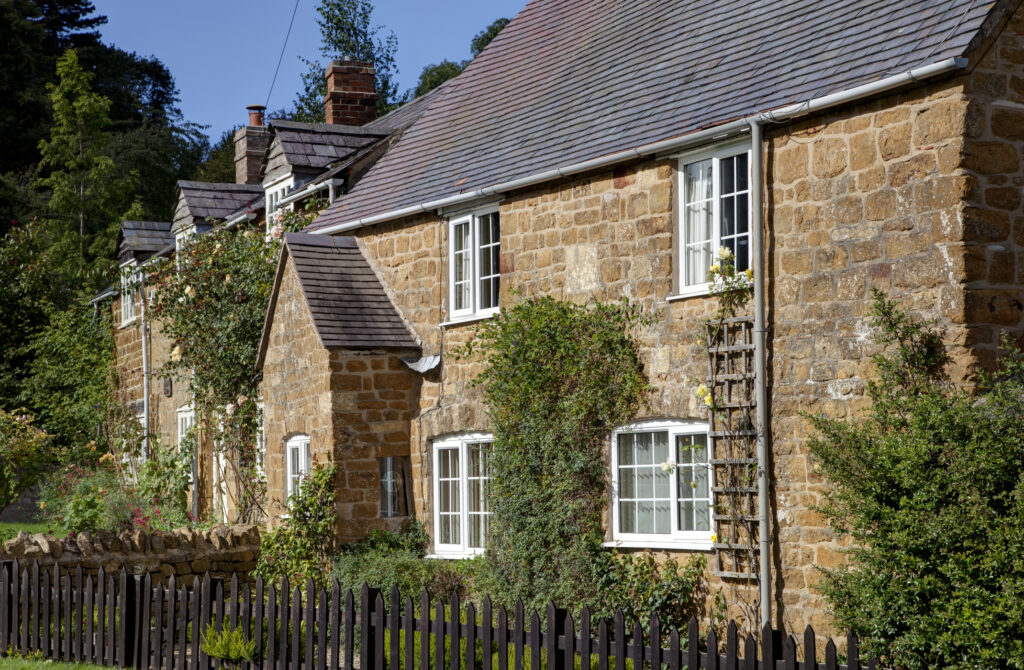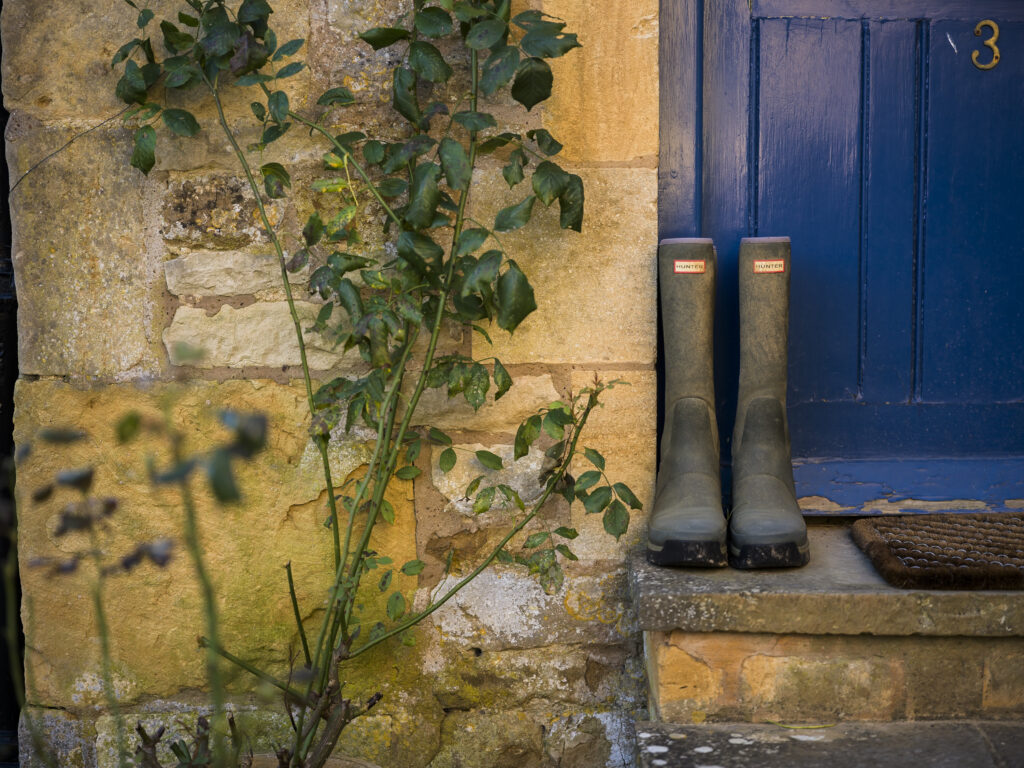The Return of Practicality to Cotswolds Buyers
For many, the Cotswolds are the ultimate expression of English country living – its honeyed-stone villages, rolling hills and reputation for well-heeled conviviality continuing to lure those seeking an escape from city life. But with the dynamics of the market shifting, so too is the geography of its most desirable postcodes, as our Partner Harry Gladwin and Cotswolds Buying Agent Georgina Neil attest.

During the pandemic and the years that followed, many buyers convinced that working from home was here to stay were drawn to the Cotswolds by lifestyle and cachet above all else. They gravitated towards the so-called “Golden Triangle” – the prime area between Chipping Norton, Stow-on-the-Wold and Burford in Oxfordshire and Gloucestershire. But a new mood is emerging. With the return to the office reshaping working patterns, buyers are now weighing practicality more carefully. Proximity to London, access to good schools and easy connections via the M40 or mainline rail are once again carrying as much weight as lifestyle aspirations.
“Practicality is definitely beginning to creep back into people’s requirements,” says Harry Gladwin, our Partner and Head of the Cotswolds Region. “The northern part of the Cotswolds, taking in the South Warwickshire villages, is increasingly popular because it offers better value and is arguably a little bit more authentic – and it’s still pretty accessible thanks to its proximity to the M40.” The south-eastern Cotswolds, he adds, “were traditionally popular with commuters because of their accessibility to Oxford and London, and also to schools such as the Dragon and Summer Fields. That shifted in the post-Covid years to take in areas such as Burford and Stow-on-the-Wold which would have been considered too far out, but it’s changing now.”
Beyond the Golden Triangle
This “creep” as Harry describes it doesn’t displace the Golden Triangle’s enduring appeal – it is home to Soho Farmhouse, Daylesford and Estelle Manor, after all. Rather, it represents an evolution: a broadening of what buyers now consider the “desirable” Cotswolds as they consider the importance of connectivity, community, schooling and long-term value.
“Everybody was slightly wowed by the Golden Triangle for a while, wanting to be near Daylesford and Soho Farmhouse, but now we’re seeing people open to a wider range of locations,” says Georgina Neil, our Cotswolds Buying Agent. “The corridor up from Oxford through Kidlington and towards Bicester, Deddington and Banbury has become very popular because the train service from Oxford is good, with fast trains every 30 minutes.”
Villages to the north, such as Whichford, Ascott and Sutton-under-Brailes in South Warwickshire, have emerged as strong contenders for those seeking space and connectivity. “The countryside up there is really beautiful – open and unspoilt” says Harry. “It feels authentic in the same way that the countryside west of Stow-on-the-Wold does, but you’re that bit closer to Banbury and the mainline train to London.”
“You can still get to all the places you’d want such as Daylesford, Soho Farmhouse within 20 minutes or so,” Harry adds. “But you can also step back from the busier spots if you want to. It gives you the best of both worlds.”
Meanwhile, the continued development of amenities around Chipping Norton and north Oxfordshire – including the planned opening of The Ned’s country hotel by the end of the decade – is helping to knit these areas together into a wider lifestyle geography. “As soon as you’ve got enough people who want to be in that neck of the woods,” Harry says, “the amenities follow.”

The Oxfordshire–Warwickshire Edge
This belt of countryside, skirting the northern edge of the Cotswolds into South Warwickshire, is developing a distinct identity. Its draw lies in its balance of authenticity and convenience: open farmland and unspoiled scenery combined with practical access to London, Oxford and Birmingham.
“There are plenty of strong communities up there, with a more genuine mix of people,” Harry says. “You still get all the Cotswold charm – traditional pubs and pretty cottages – but without the self-consciousness. It feels more grounded, a reminder of what the region was once all about.”
Georgina sees the same sense of equilibrium extending eastwards. “If you live between Chipping Norton, Banbury and Bicester, you’ve got excellent schools to choose from – Winchester House in Brackley, Northamptonshire; Bloxham School near Banbury, even Beachborough and Stowe in Buckinghamshire,” she says. “Bloxham’s flexi-boarding option has widened its appeal hugely.”
This combination of practicality and quality of life is underpinning a gentle market shift rather than a sudden migration. “People still love the core Cotswolds,” Georgina adds. “But we’re seeing a broader definition of what living here means. It’s not just about being close to a particular club or postcode – it’s about how easily you can get to work, or to school and still enjoy beautiful countryside.”
Confidence Returning
Parts of north Oxfordshire and South Warwickshire that once seemed peripheral are now benefiting from renewed confidence. “This area became quite unpopular because of HS2,” Georgina recalls. “But now that the work has begun and the uncertainty has gone, people have more confidence to buy there again.”
Market towns such as Deddington, six miles south of Banbury, are enjoying a quiet revival. “You’re seeing new cafés, well-kept pubs, and a sense of local community returning,” she says. “It’s not trying to be somewhere else – it’s just a pleasant, liveable place, where you can get a good meal in your local pub without everything being very high-end.”

A Shifting Market
What emerges from these shifts is a more nuanced picture of the Cotswolds market. The Golden Triangle remains a magnet for buyers seeking prestige and proximity to established hubs, while the northern and eastern edges offer a quieter, more practical alternative for those prioritising connectivity and value.
“People still want the beauty the Cotswolds is famous for,” Georgina says. “They’re just being a bit more thoughtful about what works day to day. If you’ve got teenagers, for example, it helps to have a bus route into Oxford or a train station nearby. That practicality is what’s driving many of the decisions now.”
Harry agrees. “If you want a weekend cottage, the hotspots will always appeal,” he says. “But if you’re looking for a bigger house with land then you are far more likely to find it up towards South Warwickshire.”
A Broader Definition of the Cotswolds Dream
For all the shifts in emphasis, the appeal of the Cotswolds endures, just in a more diverse form. The same rolling hills and mellow stone that drew Londoners seeking space and respite from city life now attract a wider range of buyers who want that while still maintaining connectivity.
“People are rediscovering parts of the region that feel authentic but also work practically,” Georgina says. “It’s about having space, countryside and culture, but also schools, trains and a bit of real everyday life.”
However, caution is always advised, which is where The Buying Solution’s expert guidance comes to the fore. “Because you’re moving around the edge of the Cotswolds National Landscape and the protections that come with it, you need to be alert to potential infrastructure changes and development creep,” says Harry. “It’s easy to buy in the wrong place and find yourself in a built-up area within a few years. The countryside here is beautiful and accessible, but that makes expert guidance even more valuable – you need to know exactly where to put your pin in the map.”

Harry Gladwin is our Partner and Head of the Cotswolds Region

Georgina Neil is our Cotswolds Buying Agent
For news, expert commentary and invaluable property insight, subscribe to The Insider, our quarterly newsletter, here.
